Discharge of the Schagerkogge
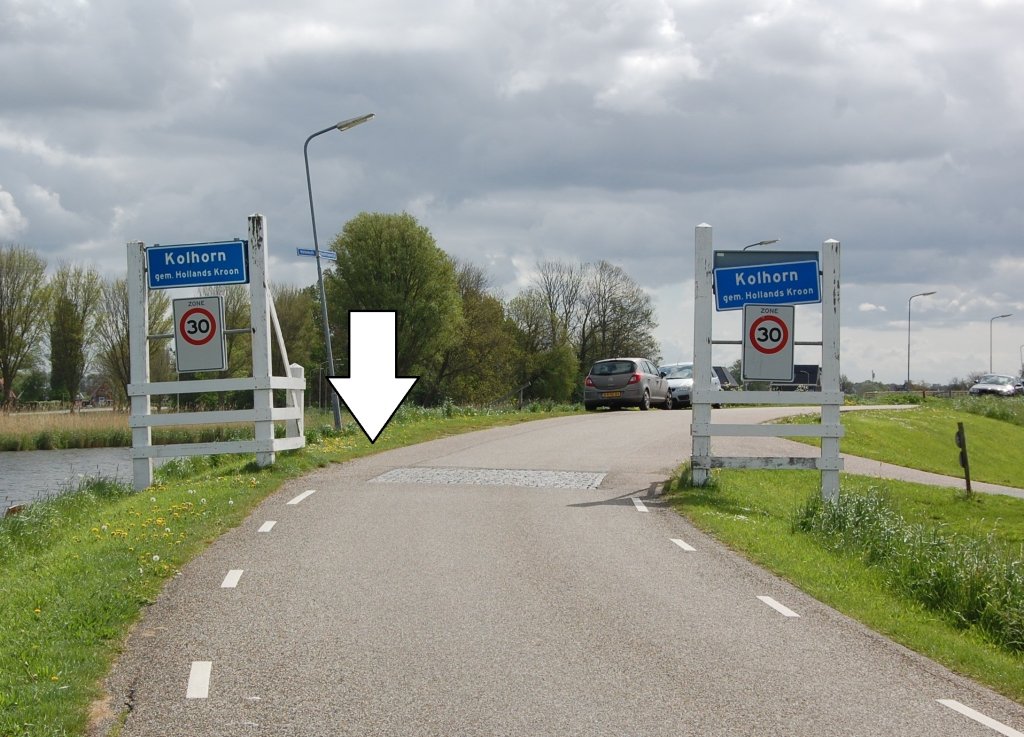
The village of Kolhorn was located by the sea until 1844. At this spot the excess water of the former water board Schagerkogge was drained through a sluice (arrow on the picture). In order to drain, it had to be low tide. The drainage went well until around 1500 the land fell below sea level. What also increasingly impeded drainage was the deposition of silt in front of the dike.
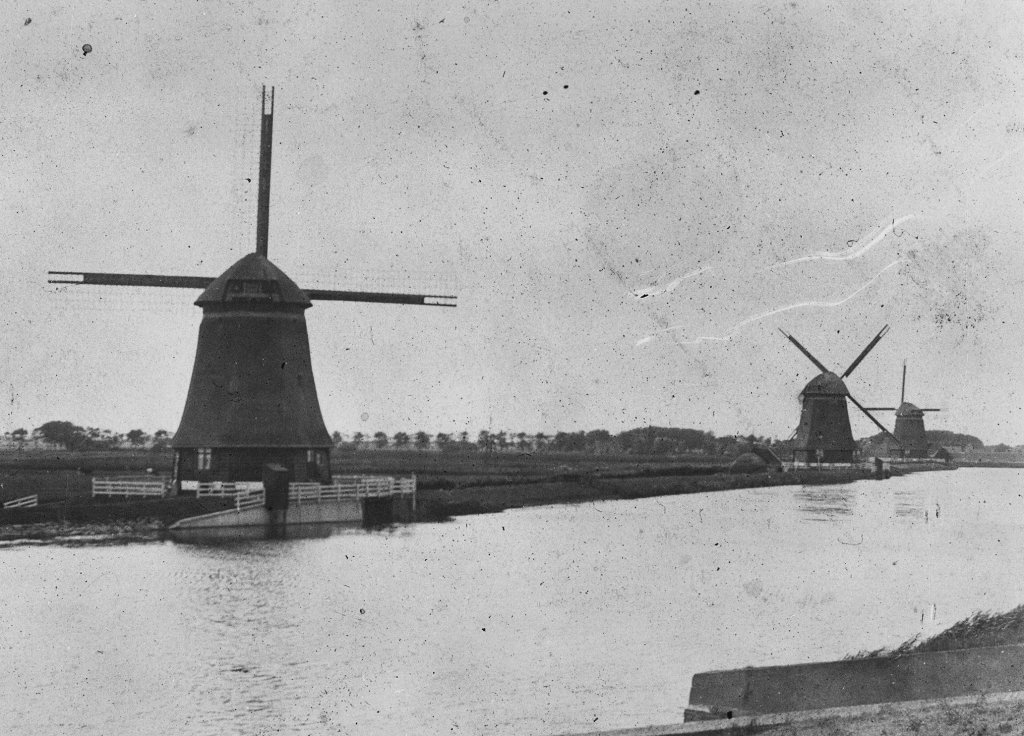
As a result of the sluice problems, the drainage of the large ditches that drained the polders' water did not run smoothly. This caused flooding in the polder itself. Farmers wanted a solution, but the city of Schagen thought the problems were not so bad. In 1738 the big step was finally taken: water board Schagerkogge decided to build three windmills near the sea lock.
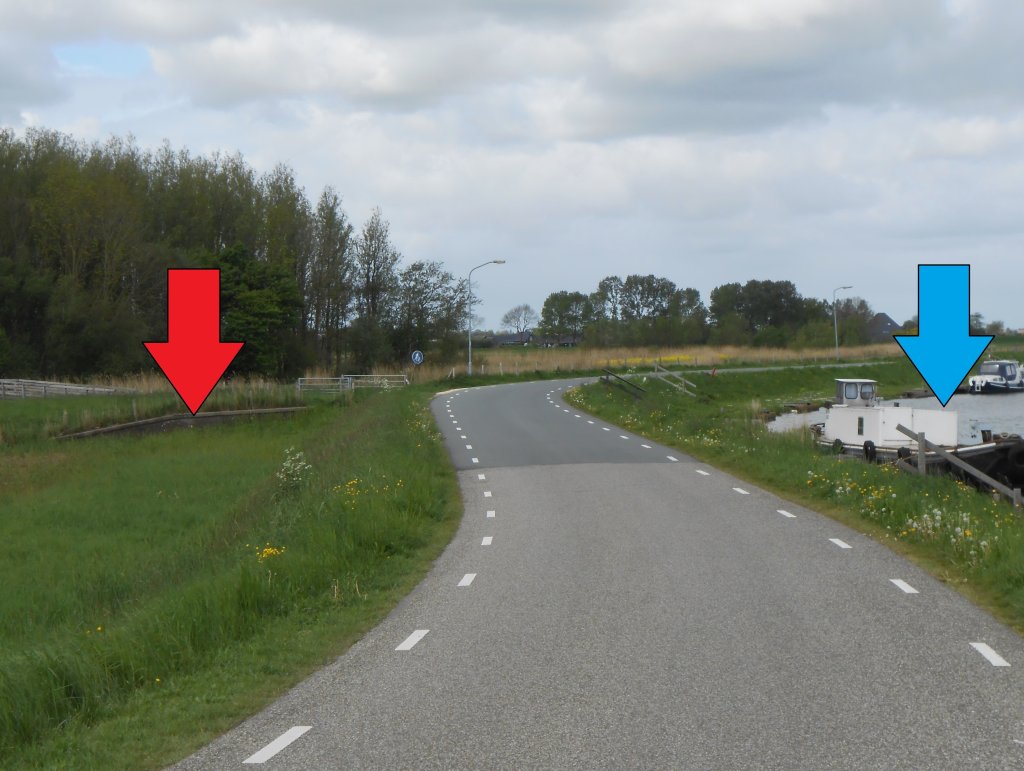
The mills milled water from the main water system (the boezem) up into the upper chamber(blue arrow in the photo). This connected to the sluice. The level in the gully was higher, so that water could be drained with some regularity. One of the mills stood at the spot indicated by the red arrow. The others stood further west.
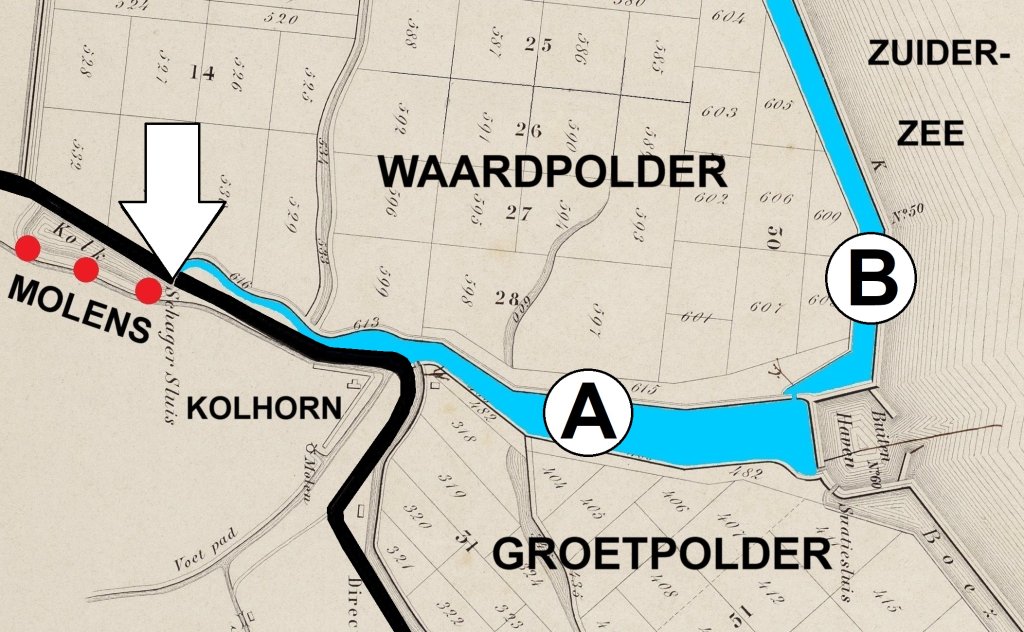
Meanwhile, the Zuiderzee formed silty lands. Between 1844 and 1847, they were reclaimed under the names Waard and Groet. As a result, the Omringdijk (black line on the Map) was no longer on the sea. To be able to continue draining, an outlet was dug from the lock (arrow) along Kolhorn (A). This connected to a drainage canal (B), which the new polder had dug by order of the water boards.
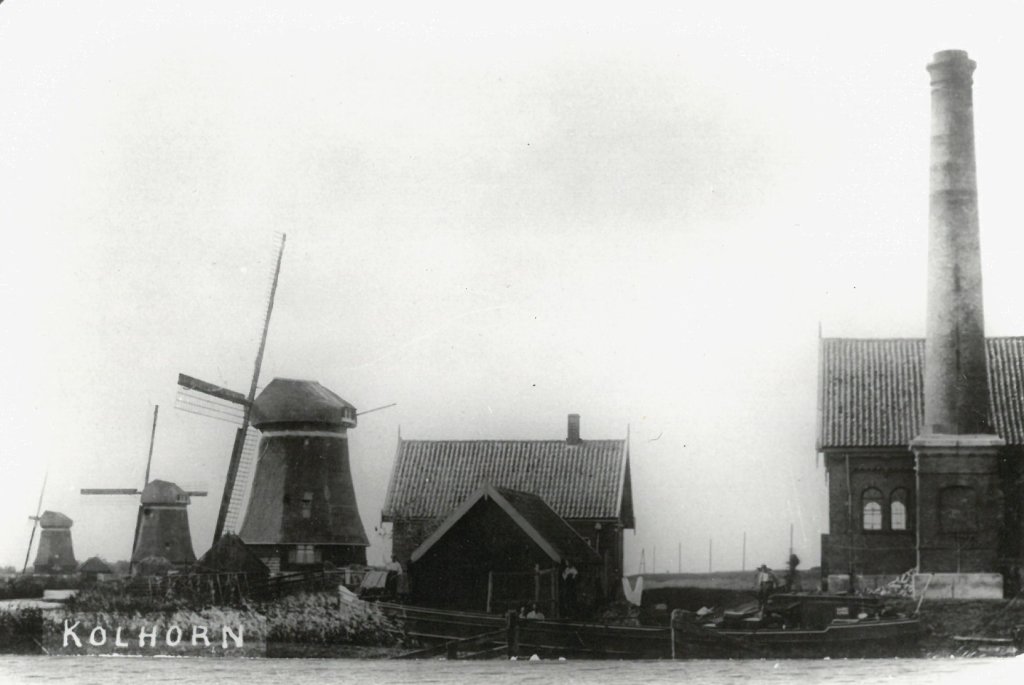
Steam engineering had by now made great progress. A network of engineers, machine shops and coal suppliers had emerged. Steam had become a reliable and affordable option for a water board. In 1871, the steam pumping station De Schagerkogge was completed at the mills. It was turned on when the wind failed, but also when it blew too hard. In fact, a mill could catch fire if it turned too fast.
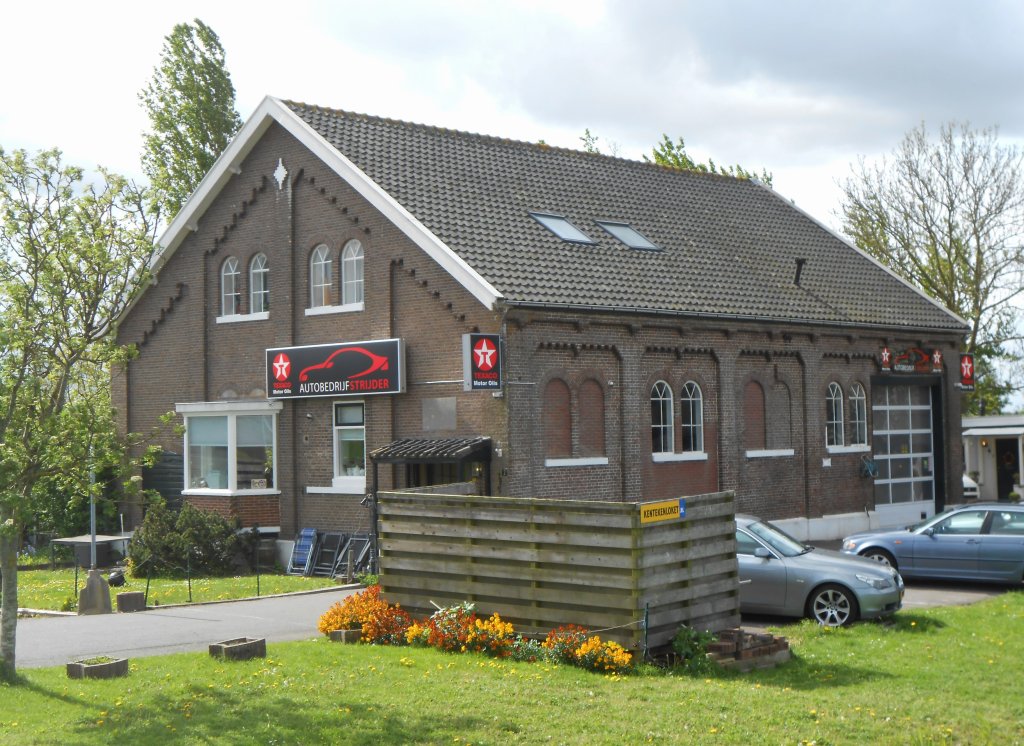
The pumping station was not the work of Schagerkogge Water Board, but of a special district water board that had managed the mills since 1861. This water board had an electric pumping station built in Kolhorn in 1927. This was so powerful that the steam pumping station and the mills could be put out of operation. The mills were demolished in 1939; the building of the steam pumping station still stands before us (photo), albeit without a chimney.
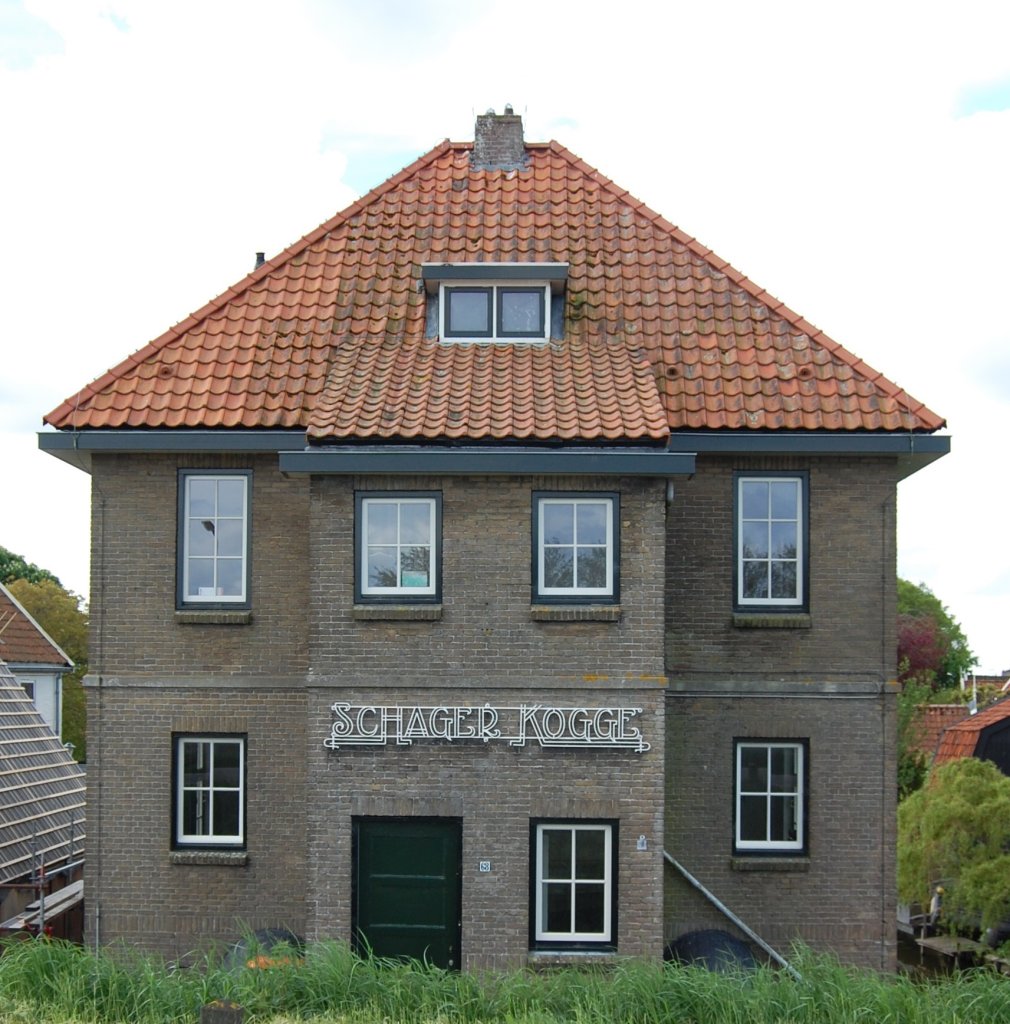
The electric pumping station in Kolhorn (photo) served until 2007. The water system has since been pumped by an electric pumping station west of the village. Like its predecessors, it is called Schagerkogge.
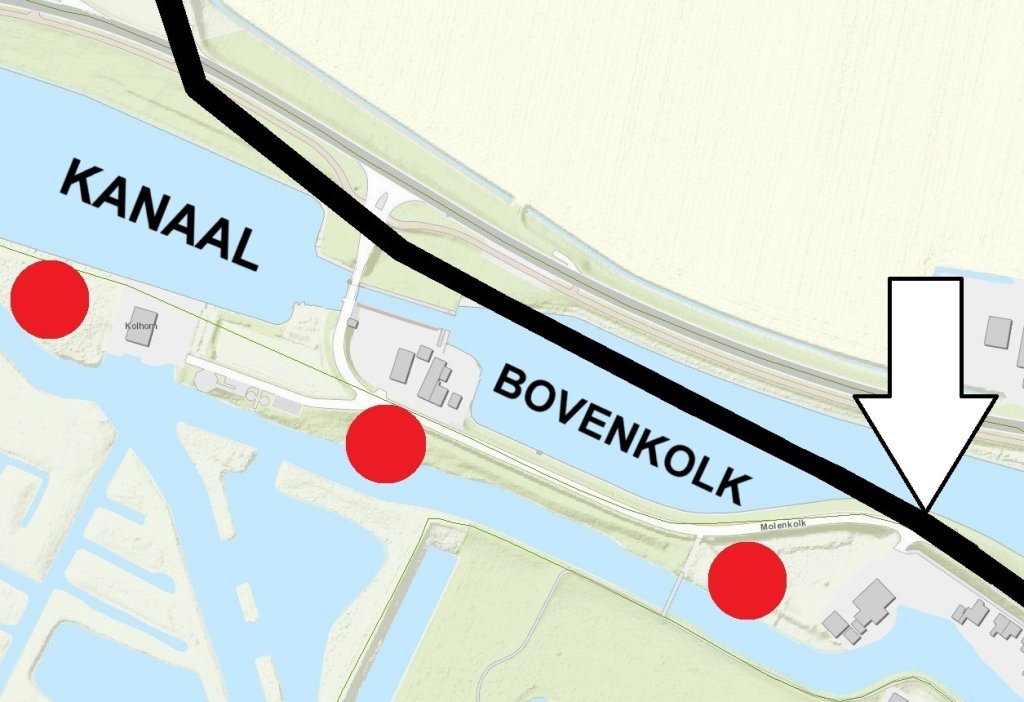
Behind the upper wharf was originally the Omringdijk (black line on the Map), but it was dug through in 1934. They wanted to incorporate the kolk into the new Schagen-Kolhorn canal. To do so, it had to be widened and several hundred meters of the dike had to give way. You are standing at the tip of the arrow, the red dots indicate where the mills stood.